#ArchaeologicalWonder
Explore tagged Tumblr posts
Text
The Venus of Willendorf
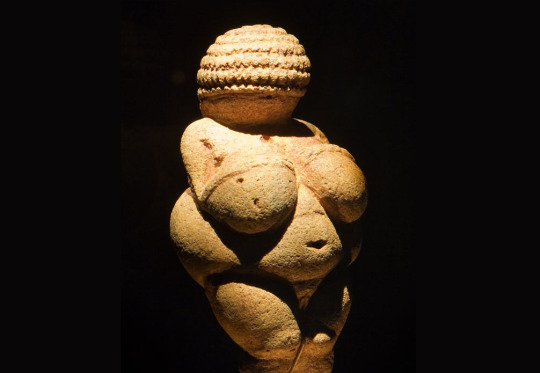
Exploring the Majestic Venus of Willendorf: A Paleolithic Masterpiece
The Venus of Willendorf, considered the most illustrious among the Paleolithic Venuses, is a statuette carved from oolitic limestone and adorned with red ochre paintings, standing at a height of 11 cm. Dated between 24,000 and 22,000 B.C., this iconic work of art is not native to the region where it was discovered but now reigns supreme in the Naturhistorisches Museum in Vienna.
Chronicle of an Extraordinary Discovery
In 1908, archaeologist Josef Szombathy discovered the Venus of Willendorf at an archaeological site near Willendorf in der Wachau, along the left bank of the Danube in Austria. The Paleolithic site underwent careful examination around 1990, allowing a reevaluation of previous estimates regarding the artwork's dating. Stratigraphic analysis indicated that the statuette was created between 25,000 and 26,000 years ago, a significant correction from earlier estimates that erroneously placed it between 10,000 B.C. and 32,000 B.C.
Sculptural Anatomy: Details and Vibrant Colors
The Venus of Willendorf, representing a nude female figure, rests her arms on her breasts. The most distinctive features are the rounded and ample forms, while facial features are deliberately left uncarved. The spherical head is covered with a hairstyle interpreted as a headdress of shells or a coiffure, perhaps reminiscent of the curly and frizzy hair typical of the African population.
The reddish clay surface, combined with the yellowish and porous limestone, creates a play of light and shadow that highlights the roughness of the surface. The underlying shadow emphasizes the abundant shapes of the figure, creating a suggestive chiaroscuro effect.
Symbolic Meaning: Fertility and Mother Earth Worship
The Venus of Willendorf, the precursor of prehistoric Venuses, is steeped in symbolism. These statuettes, usually ranging from 3 to 15 cm, often feature elongated legs and heads, perhaps suggesting the practice of embedding them in fields or among cave rocks, according to the customs of the time.
Accentuated sexual traits, such as monumental breasts, a prominent belly, and ample buttocks, are interpreted as symbols of fertility. The Venus of Willendorf, with its pronounced forms and attention to detail in sculpture, connects to the worship of Mother Earth and her ability to foster prosperity.
In conclusion, this statuette embodies the symbolism of an era where population growth was pivotal in elevating social status, emphasizing the primary importance of births in the construction of a civilization.
#VenusofWillendorf#PaleolithicArt#AncientSculpture#PrehistoricSymbolism#ArchaeologicalDiscovery#HistoricalMasterpiece#MotherEarthWorship#CulturalHeritage#AncientGoddess#SymbolsofFertility#ArtisticExpression#ViennaMuseum#AncientCivilization#HistoricalArtifacts#PrehistoricWisdom#ChiaroscuroEffect#CaveArt#CulturalLegacy#AncientSymbols#ArchaeologicalWonder
2 notes
·
View notes
Text
Petra, Jordan
Step into History at Petra
Petra, the ancient city carved into rose-red cliffs, is a wonder of the world. Marvel at the iconic Treasury, hike to the Monastery, and experience the magic of Petra by night under a canopy of stars. It’s a destination that feels like stepping into a different era.

Start your journey to Petra today!
👉🏻 Plan your historical adventure with us!
#Petra Jordan#PetraJordan#ExplorePetra#NewYearInPetra#LostCityOfPetra#TravelToJordan#PetraByNight#ancient wonders#JordanAdventures#PetraTravel2025#HiddenGemsMiddleEast#DesertBeautyJordan#HistoricPetra#MiddleEasternCulture#WadiMusaTrails#BucketListPetra#ScenicJordan#ArchaeologicalWonder#VisitJordan2025#travelgoals2025#RoseCityPetra
0 notes
Text

When you are at a filming location that is over 4000 years old and you are about to shoot a scene...
0 notes
Text

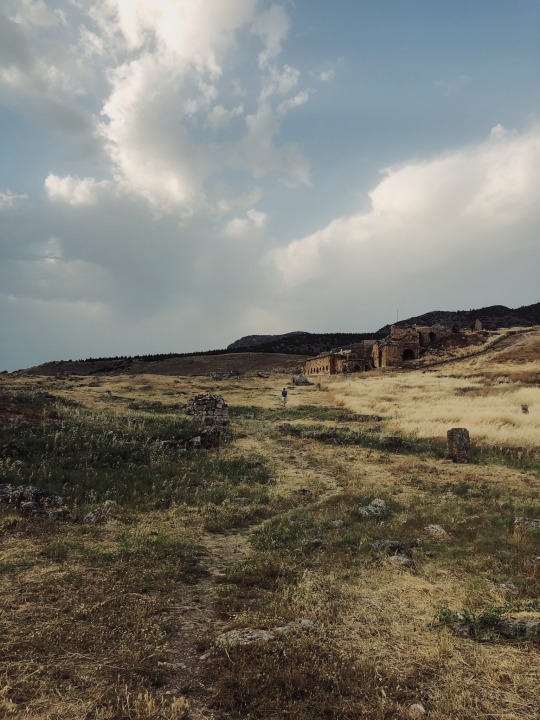
Hierapolis, Turkey
#mine#turkey#pamukkale#ancient#ancient greece#archaeology#archaeologicalwonders#landscape photography#ancient art#hierapolis
9 notes
·
View notes
Text
Exploring Ancient Ruins Around the World
For cheap and best Travel Bookings - https://tripsdeals.com/
The world is filled with ancient ruins that whisper tales of past civilizations, offering a glimpse into human history and culture. Exploring these remnants can be a transformative experience, taking travelers back in time while immersing them in the awe-inspiring architectural marvels of bygone eras. From the mystical pyramids of Egypt to the grandeur of Machu Picchu, ancient ruins serve as windows into our collective past.
One of the most iconic ancient sites is the Great Pyramid of Giza in Egypt. Standing tall for over 4,500 years, this wonder of the ancient world showcases the engineering brilliance of the ancient Egyptians. Visitors marvel at its precise construction and ponder the mysteries of its creation. Another breathtaking site is Machu Picchu in Peru, nestled high in the Andes Mountains. This Incan citadel, shrouded in mist, offers panoramic views and a sense of spiritual connection with nature.
Travelers seeking ancient history should not miss the Colosseum in Rome, Italy. This amphitheater, once a hub of entertainment for gladiator battles, still stands as a testament to Roman engineering and culture. Similarly, the temples of Angkor Wat in Cambodia captivate visitors with their intricate carvings and sprawling complex, symbolizing the zenith of Khmer architecture.
In Greece, the Acropolis of Athens draws millions of visitors with its historical significance and classical beauty. The Parthenon, dedicated to the goddess Athena, showcases the artistry and ingenuity of the ancient Greeks. Meanwhile, Petra in Jordan mesmerizes travelers with its rock-cut architecture and desert charm, earning its place as a UNESCO World Heritage Site.
Exploring ancient ruins is not just about admiring their beauty; it’s about understanding the stories behind their creation, the lives of the people who built them, and the cultural significance they hold today. These historical treasures inspire awe and curiosity, making them must-visit destinations for anyone passionate about travel and history.
For those looking to embark on an adventure through time, these ruins provide an unparalleled journey into the past, blending history, culture, and natural beauty.
#ancientruins#historicalsites#traveladventures#culturalheritage#worldhistory#travelinspiration#historicaldestinations#exploretheworld#archaeologicalwonders
0 notes
Text
Does Dahshur Pyramids Have Bodies?
The Dahshur Pyramids, situated just south of Cairo, stand as silent witnesses to Ancient Egypt’s architectural innovation. Known for their unique designs, such as the Bent Pyramid and the Red Pyramid, these pyramids are a marvel to behold. Yet, one question continues to intrigue archaeologists and visitors alike: Does Dahshur Pyramids have bodies?
If you’re curious about the discoveries and secrets behind these pyramids, dive into the full article: Does Dahshur Pyramids Have Bodies to explore this captivating topic.
The Legacy of the Dahshur Pyramids
Dahshur was a groundbreaking site during the reign of Pharaoh Sneferu in the Fourth Dynasty. It served as a testing ground for the evolution of pyramid construction, bridging the gap between early step pyramids and the more famous smooth-sided pyramids at Giza.
Key Highlights of Dahshur
The Bent Pyramid: Known for its unusual change in angle midway through construction, showcasing early experimentation in engineering.
The Red Pyramid: The first true smooth-sided pyramid, a precursor to the architectural perfection achieved at Giza.
These pyramids were designed as tombs for pharaohs, symbolizing their divine journey to the afterlife. However, they now pose an enigma — were they ever used as burial sites?
Were Bodies Found in the Dahshur Pyramids?
Despite being intended as tombs, no intact mummies or bodies have been discovered within the Dahshur Pyramids. Looting during ancient times left these grand monuments empty, with only fragments of burial equipment found. This raises questions about the success of their intended purpose and the security of ancient burial practices.
A Gateway to Egypt’s Lesser-Known Treasures
While the Pyramids of Giza attract millions of visitors annually, Dahshur offers a quieter and more immersive experience. Walking through its chambers provides a glimpse into ancient innovation and the spiritual beliefs of the time. Exploring Dahshur is a must for anyone keen on understanding the evolution of pyramid construction.
Plan Your Journey with Tailored Egypt Tours
To fully experience the wonders of Dahshur and other iconic sites, explore these handpicked tours that showcase the best of Egypt:
10 Days Cairo, Aswan, Luxor & Hurghada Overland Tour: A comprehensive journey through Egypt’s historical landmarks and coastal beauty.
8 Days Pyramids & The Nile by Air: Perfect for those seeking a seamless blend of history and luxury.
8 Days Cairo, Luxor, Aswan Classic Tours: Delve into the heart of Egypt’s cultural and historical treasures.
Discover Egypt’s Hidden Gems
Egypt is more than just the Giza Pyramids. Dahshur, the Nile, and the vibrant cities of Cairo, Luxor, and Aswan hold countless stories waiting to be explored. With our curated packages, you’ll uncover the true essence of Ancient Egypt:
12 Days Pyramids, Nile & Sinai Tour: A journey through Egypt’s spiritual and historical landscapes.
15-Day Classic Tours of the Wonders of Ancient Egypt: Explore Egypt’s timeless wonders with expert guides.
Egypt Luxury Tours: Indulge in premium travel experiences tailored for comfort and adventure.Discover the magic of Ancient Egypt through our expertly designed tours. Whether you’re seeking a classic adventure, a luxurious journey, or an insightful museum experience, we have the perfect package for you:
Egypt Tour Packages: Dive into Egypt’s timeless wonders with tours tailored to suit every traveler’s needs.
Egypt Classic Tours: Explore Egypt’s most iconic sites, from the pyramids to the Nile, with tours crafted to highlight the country’s rich history.
Grand Egyptian Museum Trial Phase Tour: Be among the first to explore the treasures of this world-class museum, showcasing Egypt’s fascinating history.
📞 Contact us today at +201274503634 to customize your trip and ensure an unforgettable experience.
Conclusion
The Dahshur Pyramids remain an essential piece of Egypt’s historical puzzle. While they may not contain intact bodies, their architectural significance and mysterious aura continue to captivate historians and travelers alike.
Ready to uncover the secrets of Ancient Egypt? Start your journey today by exploring the full story: Does Dahshur Pyramids Have Bodies. Whether it’s the awe of the Bent Pyramid or the tranquility of Dahshur’s landscapes, your adventure awaits.
#EgyptianPyramids#DahshurPyramids#VisitEgypt#EgyptianHistory#ExploreEgypt#EgyptianCulture#ArchaeologicalWonders#EgyptTravel#DiscoverEgypt#HiddenTreasures#PyramidsOfEgypt#EgyptTourPackages#LuxuryTravelEgypt#GrandEgyptianMuseum#cairo top tours#ancient egypt#egypt tours#aswan tours#19th century#egyptian
0 notes
Text
Lamanai-Ruins-Hero

Calling all history lovers. Lamanai Ruins is the ultimate playground to dive into the past. Get ready for an unforgettable adventure.
0 notes
Text
Bonampak, Chipapas, Mexico - ancient Maya archeological site
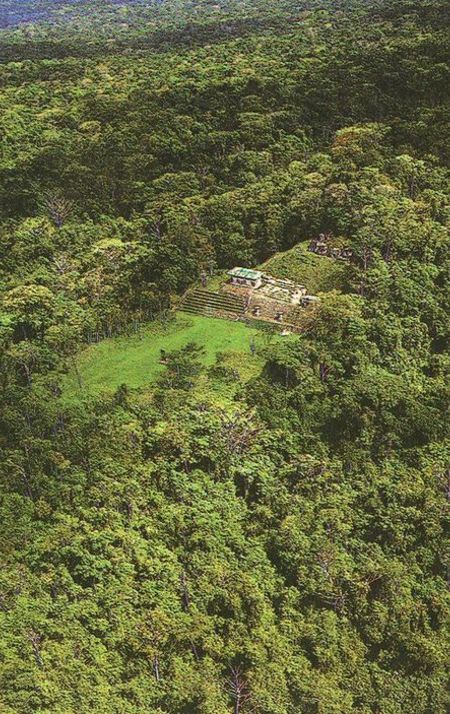
Unearth the mysteries of Bonampak in Chipapas, Mexico - a striking Mayan archaeological gem. Immerse yourself in the fascinating culture and learn about the ancient traditions that once thrived in this captivating site.
1 note
·
View note
Text
Revealing The Unknown Facts About Chichen-Itza 🌄
Chichen-Itza, one of the most iconic archaeological sites in Mexico, has long captivated the imagination of travelers and historians alike. Known for its stunning Mayan ruins and rich history, this ancient city holds numerous secrets waiting to be unveiled. In this exploration, we'll delve into the depths of Chichen-Itza, uncovering some lesser-known facts that will leave you in awe. 🏛️
Mayan Wonder:
Chichen-Itza is often hailed as the ultimate expression of ancient Mayan civilization. Its name translates to "At the mouth of the well of Itza," hinting at its unique geographical significance.
Kukulkan's Pyramid:
The most famous structure at Chichen-Itza is the pyramid dedicated to Kukulkan, the feathered serpent god. This pyramid is not just a marvel of architecture but also an astronomical wonder. 🌞
Equinox Phenomenon:
During the spring and autumn equinoxes, an astonishing optical illusion occurs on the pyramid. As the sun sets, a series of triangular shadows cascade down the stairs, creating the illusion of a snake slithering down the pyramid, symbolizing Kukulkan's descent.
Ingenious Acoustics:
The Pyramid of Kukulkan is designed with exceptional acoustic properties. Clap your hands at the base, and you'll hear an echo resembling the chirping of a quetzal bird, which was considered sacred by the Mayans.
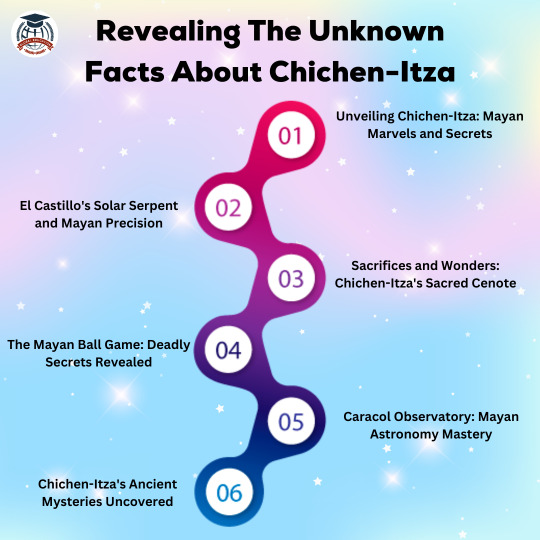
Ball Court Mysteries:
Chichen-Itza boasts the largest known ball court in Mesoamerica. The game played here, known as Pok-ta-Pok, had profound religious and cultural significance, often leading to human sacrifices.
Temple of the Warriors:
This grand structure features a thousand columns that create an awe-inspiring sight. It's believed to be a place for warriors to gather before battles, and its carvings tell tales of their valor.
Sacred Cenote:
The Sacred Cenote, a natural sinkhole, held tremendous spiritual importance. It was used for offerings to the gods, including precious objects and even human sacrifices.
Astronomical Observatory:
El Caracol, an ancient observatory at Chichen-Itza, was used by Mayan astronomers to study the movement of celestial bodies. Its spiral staircase and unique architecture are truly remarkable.
Mayan Calendar Connection:
Chichen-Itza's layout is intricately linked to the Mayan calendar system. The number of steps, platforms, and the division of the city into 9 sections all correspond to Mayan timekeeping.
Mysterious Decline:
Around the 10th century, Chichen-Itza mysteriously declined and was abandoned. The reasons for this remain a subject of debate among historians.
Architectural Influence:
Chichen-Itza's architecture shows a mix of Mayan and Toltec styles, suggesting a significant cultural exchange.
World Heritage Site:
In 1988, UNESCO declared Chichen-Itza a World Heritage Site, recognizing its cultural and historical significance.
Restoration Efforts:
Extensive restoration work has been carried out over the years to preserve the site's integrity. This has allowed visitors to witness its grandeur in its near-original state.
Challenging Preservation:
Chichen-Itza faces challenges like erosion, pollution, and the impact of mass tourism. Efforts are ongoing to balance the preservation of its heritage with sustainable tourism.
Hidden Chambers:
Recent research using advanced technology has revealed the existence of hidden chambers and tunnels beneath the Pyramid of Kukulkan. The purpose of these chambers remains a mystery.
Avenue of the Dead:
The main road leading to Chichen-Itza is often referred to as the "Avenue of the Dead," drawing parallels to the famous road at Teotihuacan in Central Mexico.
Artifacts and Treasures:
Many valuable artifacts have been unearthed at Chichen-Itza, shedding light on the daily lives and religious practices of the Mayans.
Sacred Geometry:
The layout of Chichen-Itza is believed to adhere to sacred geometrical principles, with buildings aligned to celestial events and natural features.
Role in Trade:
Chichen-Itza served as a central hub for trade routes connecting the Yucatan Peninsula with other Mesoamerican regions.
Legends and Myths:
The city is steeped in legends and myths, including tales of its creation by the god Itzamna and its eventual abandonment due to conflicts.
Modern-Day Celebrations:
Chichen-Itza is still a place of celebration during important Mayan festivals, where descendants of the ancient civilization gather to honor their heritage.
Cenote Exploration:
Divers have ventured into the Sacred Cenote to uncover ancient offerings and gain insights into the Mayan rituals held there.
Chichen-Itza in Pop Culture:
The site has made appearances in various movies, books, and video games, cementing its status as an iconic archaeological wonder.
Conservation Challenges:
Balancing tourism with preservation is an ongoing challenge. Sustainable tourism practices and responsible visitor behavior are crucial for its survival.
Intriguing Future Discoveries:
Chichen-Itza continues to be a source of fascination and a place of ongoing research. Future discoveries are likely to reveal more about its mysteries.
#ChichenItza#MayanCivilization#ArchaeologicalWonders#AncientHistory#Kukulkan#Mesoamerica#MayanPyramids#Astronomy#CulturalHeritage#SacredSites#MexicoTravel#UNESCOWorldHeritage#MayanCulture#HiddenChambers#SustainableTourism#MayanMyths#ArchaeologicalResearch#HistoricalTreasures#AncientArchitecture#MayanRituals#CenoteExploration#LegendsAndMyths#CulturalPreservation#MayanFestivals#ArchaeologyToday#ChichenItzaFacts#MysteryUnveiled
0 notes
Photo

Bonampak, Chipapas, Mexico - ancient Maya archeological site Step back in time at Bonampak, a renowned Mayan archaeological site in Chipapas, Mexico. Explore the rich history and intricate artwork that sheds light on this ancient civilization.
0 notes
Text

Step back in time with our Mayan Ruins of Mexico Self-Guided Walking Tour Bundle!✨ Uncover the mysteries of ancient civilizations as you explore the fascinating ruins scattered across Mexico.
0 notes
Text
Chauvet Caves
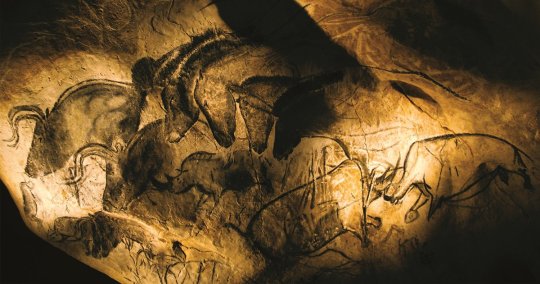
This extraordinary cave, located in the southern region of France, unveiled its secrets back in 1994.
32,000 Years Ago: The Oldest Documented Paintings
The paintings found here, the oldest ever documented, date back to 32,000 years ago.
Sealed Cave: 20,000 Years of Preserved Integrity
The Chauvet Cave, named in honor of one of its discoverers, had maintained its integrity until that moment, protected by a landslide that had sealed the entrance 20,000 years earlier.
Animal Kingdom Represented: From Mammoths to Owls
These cave paintings are predominantly dedicated to depictions of animals, ranging from majestic mammoths, bears, cave lions, rhinoceroses, bison, and aurochs, to more harmless creatures like deer, reindeer, horses, and even an owl.
Hunting in Action: Lionesses and Prey in Motion
The most impressive wall depicts dozens of lionesses chasing a group of mammoths, bison, and rhinoceroses. The artists have masterfully captured the dynamism of the scene, outlining with variations in thickness and intensity the silhouettes of the animals in the foreground and background. Accurate shading on the backs and muzzles contributes to a sense of three-dimensional volume.
Artistic Mastery: Color, Chiaroscuro, and Engraving
The extraordinary quality of the painted images is evident in the mastery of color and chiaroscuro, skillfully combining painting with engraving.
Anatomical Details: In-Depth Knowledge of Subjects
Surprisingly, the unknown prehistoric artists demonstrate a detailed knowledge of the anatomy of the subjects, creating works that suggest three-dimensionality and movement.
Unveiling the Mystery: Scientific Analysis and Precise Dating
This artistic mastery puzzled scholars for a long time, as it seemed incredible that prehistoric humans could produce such refined works. Only through in-depth scientific analysis was it possible to precisely date these extraordinary cave paintings, revealing the true extent of the artistic skills of our ancestors.
#ChauvetCave#PrehistoricArtistry#AncientPaintings#ArchaeologicalRevelation#CaveMasterpieces#HistoricalDiscovery#ArtisticLegacy#PaleolithicSkills#ScientificAnalysis#CaveArtMystery#AncestralArt#ChauvetRevelation#PrehistoricWisdom#AncientTechniques#ArtisticGenius#TimelessExpressions#HistoricalHeritage#CaveArtistry#ArchaeologicalWonders#AncientArtists#ChauvetDiscovery
1 note
·
View note
Photo

New Archeological Wonder Unlocked 🔓 Diving deep into the mysterious past of the Huaca de la Luna y del Sol! Where human 💀 took place. These pyramids are located one in front of the other as if both buildings were predestined to stare at each other for the rest of eternity. They are built entirely in adobe, a material made of mud (clay and sand) that contains countless mysteries and legends inside! 🤯 These pyramids belonged to the Moche culture, which had its heyday during the 2nd and 7th centuries, in what we know today as the Libertad region, in northern Peru. They are located 30 minutes from Trujillo, the capital of the Liberteño department, and are part of the most important archaeological complex built by the Mochica culture. Huaca del Sol ☀️ It is the largest pyramid in the place: with its 345 meters long, 160 wide, and 30 high, it commands respect from everyone who passes through the area. It has a rectangular base and five terraces, where the ancient Moches carried out political and administrative activities. According to legend, its construction required 140 million pieces of adobe and the physical effort of no less than 250,000 men! Huaca de La Luna 🌑 Although the Huaca del Sol is the largest building in the area, it is presumed that the Huaca de la Luna was the main temple of the Moche culture. This space would have been used as a scene for human 💀 rituals, since up to 40 corpses belonging to young people, adults, and warriors were discovered inside. It is also home to beautiful polychrome murals, where the maximum God of the Moches, Ai Apaec, stands out. This supreme being had feline features -with impressive fangs- and bore the nickname of the Slaughtering God since human sacrifices were made in his name to guarantee the prosperity of the crops. Did you know about this place? 🧐 . . . . . #JawDroppingViews #AncientMarvels #HuacasOfTrujillo #SpiritualJourney #AncientRituals #ArchaeologicalWonders #MysteryUnraveled #ConqueringHeights #MocheArchitecture #HistoryUnearthed #PeruvianAdventure (at Terra Sur Travels) https://www.instagram.com/p/CpTSsOMuYoZ/?igshid=NGJjMDIxMWI=
#jawdroppingviews#ancientmarvels#huacasoftrujillo#spiritualjourney#ancientrituals#archaeologicalwonders#mysteryunraveled#conqueringheights#mochearchitecture#historyunearthed#peruvianadventure
0 notes
Text
Unakoti Temple का रहस्य: क्या है इन 99,99,999 मूर्तियों की कहानी? || Alokik Puran Katha
UnakotiSculptures #TripuraTourism #AncientWonders #MysticIndia #Mythology #TravelIndia #ArchaeologicalWonder
youtube
0 notes
Text
The Bayon Temple in Cambodia is one of the most iconic and mysterious structures of the ancient Khmer Empire, located at the heart of Angkor Thom, the last great capital of the Khmer. Discover the enchanting serene faces of the Bayon Temple in Cambodia. Explore their artistic significance, historical context, and the mysteries surrounding these iconic stone carvings that capture the essence of Cambodian heritage. #BayonTemple #AncientKhmerMystery #CambodianHeritage #StoneFacesEnigma #AngkorThomSecrets #JayavarmanLegacy #KhmerEmpireIcon #TempleOfSmiles #ArchaeologicalWonder #SacredMysteries Disclaimer: This video contains certain footage and images generated using AI technology. These AI generated visuals have been used where original or real footage of individuals or events was unavailable. We have ensured that all AI-created content accurately reflects the subject matter and maintains the highest level of respect for the individuals and events discussed. Any historical facts or information presented in this video have been carefully researched and verified from reliable sources. The use of AI is intended solely for illustrative purposes and should not be interpreted as a representation of actual persons or events unless otherwise stated. Section 107 of the Copyright Act 1976: Reference: https://bit.ly/3l8GUbc 1) This video has no negative impact. 2) This video is also for entertainment purposes. 3) It is transformative in nature. The Serene Smiling Faces of the Bayon Temple: A Deified King, a Bodhisattva, or an Unsolved Mystery? published first on https://www.youtube.com/@bafflingmysteries/
#Unsolved Crime Mysteries#Alien Encounters Investigations#Unexplained Phenomena Explained#Mysterious Disappearances Unraveled#Enigmatic Historical Events
0 notes
Text
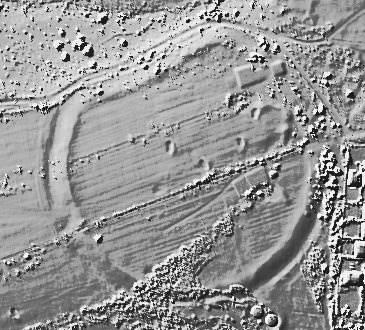

Abstract: Caesar’s Camp and Crop Circle Phenomena
Caesar’s Camp, located on Wimbledon Common, represents a prehistoric hillfort dating to around the 3rd century BC. While heavily integrated into the Royal Wimbledon Golf Club, remnants of the fort’s circular earthworks, ramparts, and ditches are still observable, albeit obscured by modern developments. The site’s layered history, blending ancient significance with contemporary recreation, evokes an interplay between past and present. The fort’s circular formation, characterized by its ditch and bank defenses, shares conceptual similarities with the crop circle phenomena, both involving enigmatic circular designs tied to cultural and natural forces. Crop circles, often considered symbols of mysticism, represent humanity’s attempt to bridge the spiritual with the material world. Similarly, Caesar’s Camp, with its ancient circular defense system, can be viewed as an early form of human expression in the landscape—an earthbound, tangible mark of historical human activity, which, much like crop circles, draws on geometry to communicate deeper meanings about power, space, and time.
In both cases, the circular motif represents a dynamic relationship between humankind and nature, each symbolizing an effort to control or interpret the environment. Caesar’s Camp, like crop circles, also invites interpretations beyond its visible form, from historical military significance to spiritual connections, making it a fertile site for such comparative analysis.
#CaesarsCamp
#WimbledonCommon
#HillfortHistory
#CropCircleMystery
#AncientLandmarks
#PrehistoricSites
#CircularEarthworks
#SacredGeometry
#ArchaeologyAndMysticism
#HistoricalLandscapes
#CropCirclePhenomena
#PreRomanBritain
#AncientDefenses
#TimeAndGeometry
#ArchaeologicalWonder
0 notes